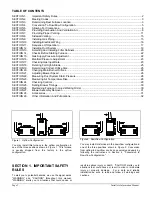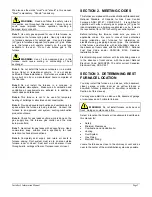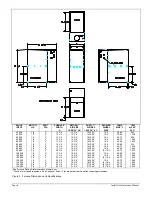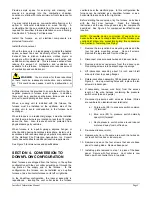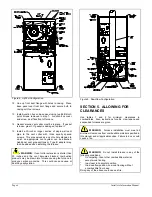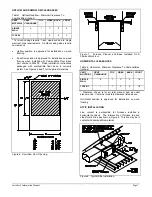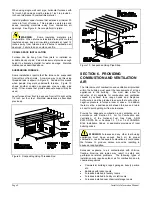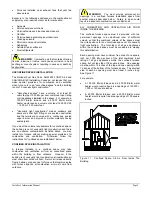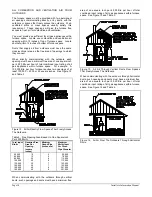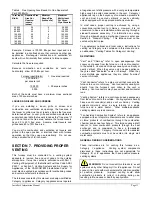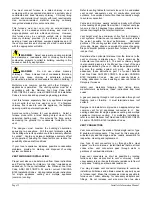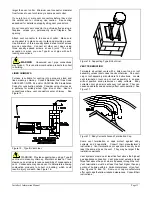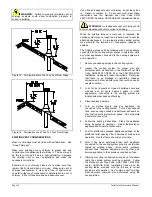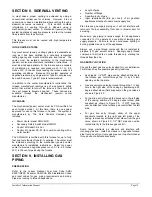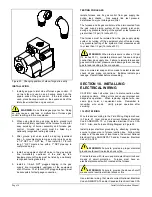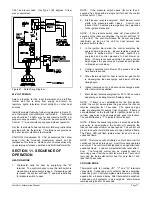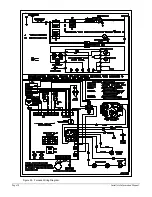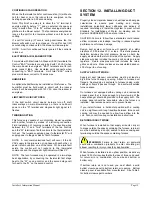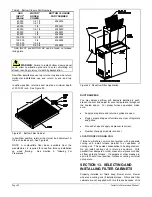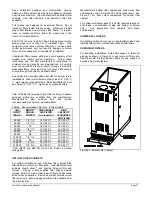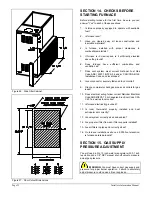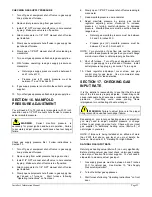
Page 8
Installer’s Information Manual
When using single wall vent pipe, horizontal furnaces with
14½-inch high casings must be raised 1 inch to provide 6-
inch vent clearance to combustible material.
Install a platform under furnace that extends a minimum 30
inches in front of furnace. This provides a work area and
keeps insulating materials away from combustion air
openings. See Figure 8. Secure platform to joists.
WARNING
: Some insulating materials are
combustible. When a furnace is installed in an attic or other
insulated space, keep all insulating materials at least 12
inches away from furnace and all burner combustion air
openings. Failure to do so could cause fire.
CRAWL SPACE INSTALLATION
Furnace can be hung from floor joists or installed on
suitable blocks or pad. Pad or blocks must provide enough
height to eliminate potential for water damage. Maintain
clearances as described above.
SUSPENDING FURNACE
Some installations require that the furnace be suspended
from rafters or floor joists. A common way to do this using
threaded rods is shown in Figure 9. Consider this means
when people may walk underneath furnace. Figure 10
shows another common suspension means using pipe
strap. Other means that provide adequate support may be
used.
Level furnace from front to back and from left to right within
1/4 inch per four feet. Maintain clearances as described
previously.
Figure 9. Suspending Using Threaded Rod.
Figure 10. Suspended Using Pipe Strap.
SECTION 6. PROVIDING
COMBUSTION AND VENTILATION
AIR
The total amount of combustion and ventilation air provided
within the building must equal the requirements of all gas
appliances in the building. You must also allow for
reduction of air available for combustion and ventilation
caused by exhaust fans, range hoods and fireplaces.
Sufficient air must be provided to ensure there will not be a
negative pressure in furnace room or space. In addition,
there must be a positive seal between furnace and return
air duct to avoid pulling air from burner area.
Provide for adequate combustion and ventilation air in
accordance with Section 5.3, Air for Combustion and
Ventilation, of the National Fuel Gas Code, ANSI
Z223.1/NFPA 54, or Sections 7.2, 7.3 or 7.4 of CAN/CGA
B149 Installation Codes, or applicable provisions of local
building codes.
WARNING
: Furnaces and any other fuel burning
appliances must have enough fresh air for proper
combustion. Lack of adequate combustion air could cause
the furnace to produce carbon monoxide resulting in
nausea or asphyxiation.
Excessive exposure to air contaminated with chlorine,
fluorine, bromine and iodine may result in safety and
performance related problems. The following types of
installation may require outdoor air for combustion due to
chemical exposures:
•
Commercial buildings, repair garages, beauty parlors,
etc.
•
Buildings with indoor pools
•
Furnaces installed in laundry rooms
•
Furnaces installed in hobby or craft rooms
•
Furnaces installed near chemical storage rooms


